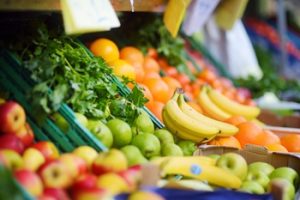Morning report: Corn, wheat take a breather as Turkey calms down Russia. (Comments are updated by 7:30 a.m. Central Time.)
Corn down 2-4 cents
Soybeans up 1-3 cents; Soymeal down $0.10/ton; Soyoil down $0.04/lb
Chicago wheat down 10-11 cents; Kansas City wheat down 8-10 cents; Minneapolis wheat down 5-7 cents
*Prices as of 6:55am CDT.
Feedback from the Field updates! How is harvest progressing on your farm this fall?! Click this link to take the survey and share updates about your farm’s harvest progress. I review and upload results daily to the FFTF Google(TM) MyMap, so farmers can see others’ responses from across the country – or even across the county!
Corn: Corn prices retreated from yesterday’s gains, falling $0.01-$0.04/bushel amid a stronger dollar, favorable weekend harvest weather forecasts, and the market’s collective sigh of relief that the Black Sea shipping terminals are likely to stay operational after Moscow aired grievances about slow fertilizer shipping paces yesterday.
Soybeans: Soybean prices rose $0.02-$0.08/bushel this morning, bucking the bearish trends that influenced corn prices lower overnight. Soybean gains were largely a function of a smaller U.S. crop expected to be harvested this fall, which will keep supplies tight even though demand continues to grow.
Wheat: Wheat prices fell $0.06-$0.10/bushel overnight as United Nations and Turkish negotiators attempted to placate Russian President Vladimir Putin over complaints that the “Black Sea Grains Initiative” was not providing Russia with enough financial benefits via increased fertilizer sales.
Putin threatened to pull out of the deal yesterday, which has allowed Ukraine to safely ship its excess grain supplies to international buyers.
Weather: The year’s first wintry mix is forecast for the Upper Midwest this weekend, according to NOAA’s short-term forecasts. Precipitation is expected to be light, which should keep harvest delays to a minimum in the region. If anything, the colder temperatures could help to speed up dry down rates for crops along the Northern U.S. border.
But other than that, skies are forecast to be mostly clear this weekend, which should pave the way for steady harvest progress. A band of showers is forecast to stretch along the Southern quarter of the nation by Sunday, which could help improve winter wheat conditions in the Southern Plains.
Yesterday’s U.S. Drought Monitor updates through the week ending October 11 saw dry weather reach a new peak. The monitor found 81.8% of U.S. land was in some sort of abnormally dry to exceptional drought condition as of this past Tuesday, surpassing the previous high of 80.8% recorded in July 2012.
While the dry weather has been largely favorable for harvest progress this fall, it is beginning to create some concerns about 2023 harvest potential – especially for wheat. Top winter wheat producing areas in the Plains have been plagued by drought for over a year now, which lowered yields and increased abandonment during the 2022 growing cycle.
Farmers have largely planted winter wheat this fall for next summer’s harvest in lines with historical speeds, despite battling dry soils. Emergence rates are lagging slightly behind historical paces as the dry dirt limits the volume of nutrients available to the young crop.
But this much is clear – the continental U.S. needs more precipitation in the coming months if 2023 yields are to return back to trendline levels for next year’s growing season. The wheat crop may already be in trouble, but so too will other crops especially if La Ni?a weather patterns that leave the Plains dry persist in the coming months.
Cooler temperatures are finally expected to settle into the Midwest through the end of the month. NOAA’s 6-10-day outlook is showing cooler temperature probabilities for continental region to the east of the Mississippi River, though chances for precipitation will hover below average for much of the Upper Midwest during that time.
However, the 8-14-day outlook is trending warmer for the Heartland through the end of October. The extended forecast also indicates drier than average precipitation patterns, which will benefit harvest progress for late-planted crops.
Financials: Big news overnight in the food world – grocery behemoth Kroger (Payless, City Market, Fred Meyer) will buy its top competitor, Albertsons (Safeway). The consolidation – if the U.S. Department of Justice lets it through without any antitrust concerns – will allow the grocer to compete against Walmart more readily.
This is a development to which I believe livestock producers should be paying extra attention. In economic theory (and somewhat in reality also), retailers set the prices at which meat packers (and other food processors) sell their cuts. This influences the prices at which meat packers are willing to buy livestock from farmers.
A consolidated Kroger and Albertsons organization would shrink the prices retailers offer middlemen, which would inevitably be passed down to farmers in the form of lower buying prices offered to farmers by packers. I’m not an overly political person, but this would be a great topic for farmers to bring up to their elected representatives in the next couple weeks if farmers are concerned that their margins could be impacted.
Yesterday, the U.S. Bureau of Labor Statistics (BLS) announced updated Consumer Price Index (CPI) data for September 2022, finding that inflation increased 0.4% from the previous month to a new 40-year high of 8.2%. Markets were largely unsurprised by the finding, as high energy prices were already expected to increase the cost of the price basket measured by the BLS.
At any rate, the rising cost of goods indicates that previous Federal Reserve interest hikes are not yet cooling inflationary pressures which will likely lead to further Fed interest rate hikes at next month’s Federal Open Market Committee (FOMC) meeting.
But markets were undeterred by inflation this morning, instead turning its focus to optimistic quarterly bank earnings, which sent S&P 500 futures 0.22% higher to $3,690.00 at last glance this morning.
What else I’m reading this morning on our website, FarmFutures.com:
Our team’s coverage of the October 2022 WASDE reports!
AgMarket.Net’s Bill Biedermann explains why bullish sentiments were afoot for corn and wheat in yesterday’s WASDE, even though prices traded lower following the report’s release.
Water Street Solution’s Darren Frye asks farmers – what is your definition of a successful farm?
Executive editor Mike Wilson explains how to manage costly nitrogen for high-yielding corn.
Bryce Knorr explains why harvest lows could already be at play in the markets.





